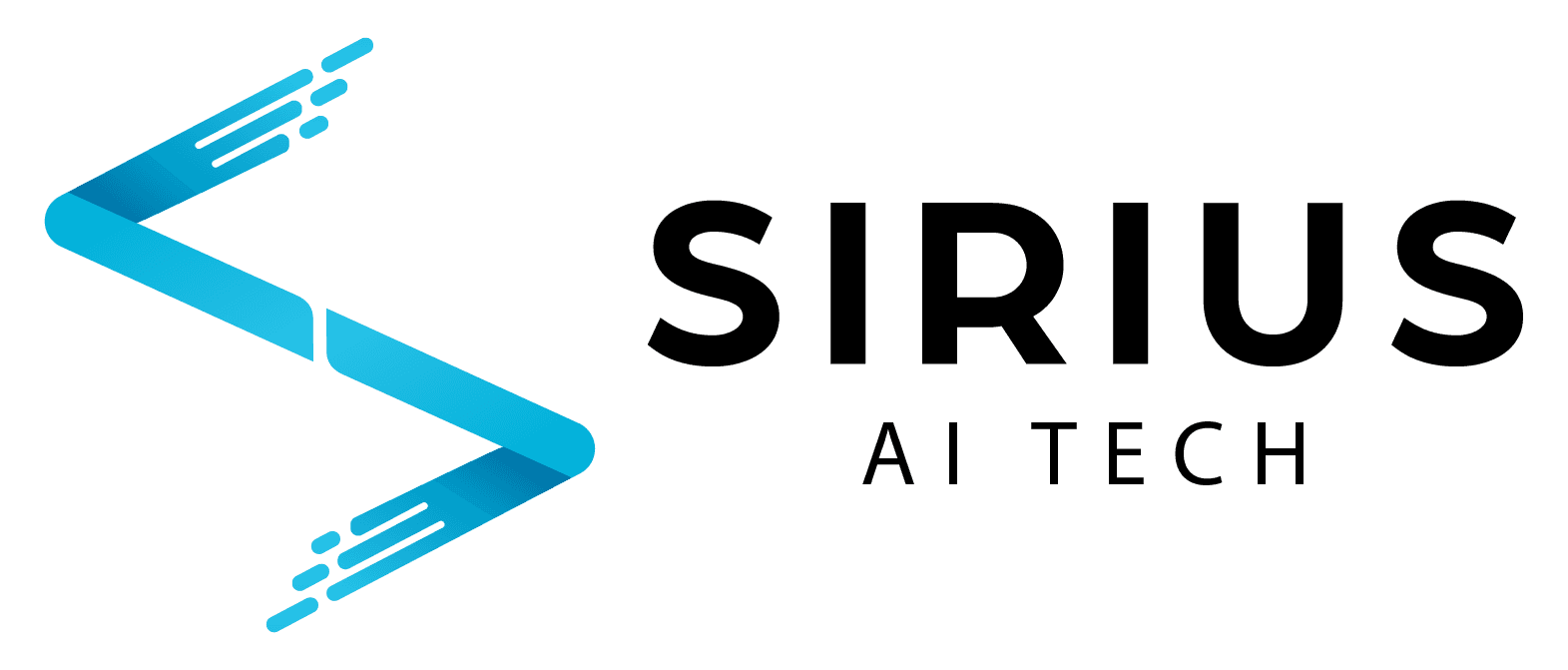AI for Sustainable Business Growth
Discover how AI revolutionizes sustainable business growth by optimizing resources, reducing waste, and enhancing eco-friendly operations for lasting success.
Blog >
AI for Sustainable Business Growth
AI for Sustainable Business Growth
Sustainability has become a cornerstone of modern business strategies, prompting leaders to increasingly employ advanced technologies to achieve eco-friendly objectives. Among these, AI-driven technologies are reshaping how businesses enhance their sustainability efforts and achieve growth. Understanding how AI optimizes resources and improves efficiencies can unveil new pathways for businesses striving for sustainable success.
Understanding AI-Driven Resource Optimization
The Role of Adaptive AI in Sustainable Business Growth
Adaptive AI plays a crucial role in promoting sustainable business growth by continuously learning and adapting to optimize operations. By automating repetitive tasks, businesses can significantly enhance productivity without overexploiting resources. For instance, a manufacturing company might use adaptive AI to streamline its production line, reducing energy consumption and minimizing waste. Similarly, a logistics firm could implement AI-driven route optimization to decrease fuel usage, contributing to eco-friendly business solutions. According to a recent study, companies using adaptive AI have reported a 30% increase in operational efficiency, showcasing its potential for sustainable growth.
Predictive Analysis for Efficient Resource Management
Predictive analysis, powered by AI, enables businesses to leverage big data analytics for efficient resource management. By forecasting demand and managing inventory, companies can reduce waste and ensure optimal resource use. For example, a retail chain might use predictive analysis to anticipate customer demand, preventing overstocking and reducing unsold inventory. In agriculture, AI can predict weather patterns, allowing farmers to optimize water usage and improve crop yields. A report highlights that businesses utilizing predictive analysis have seen a 25% reduction in resource wastage, emphasizing its importance in sustainable business practices.
Key Benefits of AI-Driven Resource Optimization
Enhanced productivity through automation of repetitive tasks.
Improved efficiency in resource management and inventory control.
Reduction in waste and environmental impact.
Steps to Implement AI Tools for Resource Optimization
Identify key areas where AI can enhance efficiency.
Integrate AI tools tailored to specific business needs.
Continuously monitor and adapt AI systems for optimal performance.
How AI Enhances Sustainable Business Practices
AI's Role in Energy Management and Environmental Impact
AI technology is revolutionizing energy management by optimizing systems in smart buildings, leading to significant energy savings. For example, AI can adjust heating and cooling systems based on occupancy patterns, reducing unnecessary energy use. In a recent case, a corporate office implemented AI-driven climate control, resulting in a 20% reduction in energy consumption. Additionally, AI's machine learning capabilities allow businesses to analyze emissions data, enabling more effective management and reduction of environmental impact. A manufacturing plant, for instance, used AI to predict emission levels and adjust operations accordingly, achieving a 15% decrease in carbon footprint.
Strategies for Sustainable Growth Using AI
AI offers various strategies for sustainable business growth by enhancing resource efficiency and reducing environmental impact. Here are some key strategies:
Implement AI-driven systems for real-time energy monitoring and adjustment.
Utilize AI to forecast and manage emissions, aligning with sustainability goals.
Adopt AI tools for optimizing supply chain logistics, minimizing waste.
To effectively integrate AI for sustainable growth, businesses can follow these steps:
Assess current energy and resource usage to identify improvement areas.
Deploy AI solutions tailored to specific sustainability objectives.
Regularly evaluate AI system performance and make necessary adjustments.
Exploring AI Tools for Business Efficiency
Leveraging AI for Streamlined Business Operations
AI tools are transforming business operations by automating complex tasks and enhancing efficiency. For example, Lobster Lead automates keyword research and SEO tasks, significantly improving digital visibility with minimal manual effort. This automation not only saves time but also optimizes resource allocation, contributing to sustainable business growth. In another instance, AI-driven CRM systems can manage customer interactions more effectively, leading to improved customer satisfaction and retention. A recent study found that businesses implementing AI in operations experienced a 40% increase in productivity, highlighting the potential for AI-driven resource optimization.
AI Tools for Sustainable Business Practices
AI technology offers a range of tools that support sustainable business practices by optimizing resource use and reducing environmental impact. Here are some notable tools:
AI-powered analytics for real-time data insights, enabling informed decision-making.
Machine learning algorithms for predictive maintenance, reducing equipment downtime.
AI-driven supply chain management systems for minimizing waste and improving logistics.
To effectively integrate AI tools for business efficiency, consider the following steps:
Identify key operational areas where AI can add value.
Select AI tools that align with your business goals and sustainability objectives.
Continuously assess and refine AI systems to ensure optimal performance and adaptability.
Strategies for Achieving Eco-Friendly Business Solutions
Implementing AI in Smart Manufacturing
Smart manufacturing leverages AI to enhance production processes, focusing on waste reduction and efficiency improvement. For example, AI can monitor machinery in real-time, predicting maintenance needs before breakdowns occur, thus minimizing downtime and material waste. A textile company might use AI to optimize fabric cutting patterns, reducing scrap material by 15%. Additionally, AI-driven quality control systems can detect defects early, ensuring only high-quality products reach the market, thereby reducing returns and waste. A recent survey indicates that manufacturers using AI have seen a 20% increase in production efficiency, highlighting its role in sustainable business growth.
AI-Driven Carbon Footprint Monitoring
AI analytics play a pivotal role in tracking and reducing carbon emissions from business operations. By analyzing energy consumption patterns, AI can suggest adjustments to reduce emissions, ensuring compliance with environmental standards. For instance, a logistics company might use AI to optimize delivery routes, cutting fuel consumption and emissions by 10%. In another case, a corporate office could implement AI to manage energy use, achieving a 25% reduction in its carbon footprint. These examples demonstrate how AI contributes to eco-friendly business solutions, aligning with sustainability goals.
For example, Seferi revolutionizes logistics by optimizing transportation processes. Through automated route planning and real-time adjustments based on traffic, weather, and road closures, Seferi helps minimize fuel consumption and reduce delivery delays. Its AI-powered cost optimization features also select the most efficient routes to lower expenses and environmental impact, demonstrating how AI can create both operational and ecological benefits.
Key Features of AI in Eco-Friendly Solutions
Real-time monitoring and predictive maintenance for reduced waste.
Optimization of production processes to enhance efficiency.
Advanced analytics for tracking and reducing carbon emissions.
Steps to Implement AI for Eco-Friendly Solutions
Identify areas with high environmental impact for AI integration.
Deploy AI systems tailored to specific sustainability objectives.
Continuously evaluate AI performance and adjust strategies as needed.
AI-Driven Resource Optimization for Sustainable Growth
AI technologies are revolutionizing resource optimization by automating repetitive tasks and enhancing operational efficiency. Adaptive AI continuously learns and adapts, allowing businesses to streamline processes and reduce resource consumption. Predictive analysis further empowers companies to manage resources effectively, minimizing waste and maximizing productivity.
Businesses utilizing AI-driven resource optimization report significant improvements in operational efficiency. By integrating AI tools tailored to specific needs, companies can achieve sustainable growth while reducing their environmental impact. The expertise in deploying AI solutions is evident in the enhanced productivity and resource management outcomes.
AI Enhancements in Sustainable Business Practices
AI plays a pivotal role in energy management and environmental impact reduction, offering strategies for sustainable business growth. By optimizing energy systems and analyzing emissions data, businesses can align with sustainability goals and reduce their carbon footprint. AI-driven systems enable real-time monitoring and adjustments, ensuring efficient resource use.
The authority of AI in enhancing sustainable practices is demonstrated through its successful implementation in various industries. Companies adopting AI for energy management and emissions forecasting have achieved notable reductions in environmental impact, showcasing the technology's potential for driving sustainable business solutions.
Innovative AI Tools for Business Efficiency
AI tools are transforming business operations by automating complex tasks and providing real-time data insights. These tools support sustainable practices by optimizing resource use and minimizing waste. The integration of AI in operations leads to improved productivity and streamlined processes, fostering trust in AI's capabilities.
Businesses leveraging AI tools for efficiency report enhanced operational performance and resource management. The successful implementation of AI-driven solutions in various sectors underscores the trust in AI's ability to deliver eco-friendly business outcomes and support long-term sustainability objectives.
Frequently Asked Questions
What role does AI play in sustainable business growth?
AI plays a crucial role in sustainable business growth by optimizing resources and improving operational efficiencies. Through AI-driven resource optimization, businesses can automate repetitive tasks, reduce waste, and enhance productivity. This not only supports eco-friendly business solutions but also aligns with long-term sustainability objectives.
How can AI technology improve business efficiency?
AI technology improves business efficiency by automating complex tasks and providing real-time data insights. AI tools streamline operations, optimize resource allocation, and enhance decision-making processes. This leads to increased productivity and supports sustainable business practices with AI, ultimately contributing to eco-friendly business solutions.
What are the benefits of using AI for resource optimization?
Using AI for resource optimization offers several benefits, including enhanced productivity, improved efficiency in resource management, and reduced environmental impact. AI-driven systems automate repetitive tasks and provide predictive analysis, allowing businesses to manage resources effectively and minimize waste, thus supporting sustainable growth using AI.
How does AI contribute to eco-friendly business solutions?
AI contributes to eco-friendly business solutions by optimizing energy management and reducing carbon emissions. AI-driven systems enable real-time monitoring and adjustments, ensuring efficient resource use. By aligning with sustainability goals, AI technology in business efficiency helps reduce the environmental impact and supports long-term sustainability objectives.
What strategies can businesses use to achieve sustainable growth with AI?
Businesses can achieve sustainable growth with AI by implementing AI-driven systems for energy monitoring, emissions management, and supply chain optimization. These strategies enhance resource efficiency and reduce environmental impact. By continuously evaluating AI performance and adapting strategies, companies can align with sustainability goals and achieve eco-friendly business solutions with AI.
Related Blogs

The EU AI Act: A Barrier to Innovation or a Blueprint for Responsible AI?
Explore how the EU AI Act reshapes innovation, ethics, and compliance in AI—and how Sirius AI Tech helps businesses adapt responsibly.
Read

Small Business, Big Impact: How AI Agents Can Boost Your Competitive Edge
Discover how AI agents can boost your small business's efficiency, enhance customer service, and drive growth. Unlock your competitive edge today!
Read

Celebrating Pioneering Women in Artificial Intelligence: Inspiring Stories and Impactful Contributions
The inspiring journeys and groundbreaking contributions of pioneering women in artificial intelligence. Explore the importance of ethical AI, diversity, and inclusivity in technology.
Read
Topics
#
Sirius AI Tech
#
Seferi
#
Lobster Lead
#
CV US
#
Boss AI
#
Quantum
#
Calling AI
#
News
#
Resources





